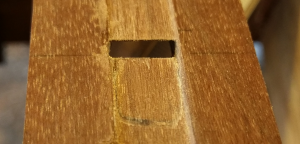Some of the differences between a premium and a standard flute
A question I’m often asked is “what’s the difference”? Well – my standard flutes play pretty well, and they’re in tune; and they don’t have anything wrong with them… BUT
When making a premium flute, I go the extra mile; and this post will tell you some of the ways I do this. It’s not just about the decoration!
First of all, the bore; a standard flute gets sanded so that it’s smooth – this is important as the air hast to shuttle up and down the inside of the flute at extremely high speed; a rough surface on the inside of the flute would make this harder to achieve and the flute would need more breath to play. So the standard flute gets sanded, and the inside is smooth.
The premium flutes get sanded a lot more, with a lot finer grade of abrasive; and the very top flutes get french polished! This level of attention to the bore is like what glider pilots to to their gliders when flying in a competition… they put stretchy tape over all the joins in the aircraft; they polish and shine and clean the surface with crazy levels of care – all to give them that slight edge in performance. With flutes – this difference is really quite noticeable; the flute will be easier to get a note out of, and easier to create sound effects with breath and finger modulation.

Another way to improve sound production is to really go to town on making the ramp, flue and cutting edge smooth and evenly shaped.
Take a look at the next two photos; one is of the cutting edge with no attention; it’s absolutely fine and will play without any problems at all – but the other photo shows the cutting edge after it’s had a bit more attention with a very fine file and even some 600-grade sandpaper. Even the second photo wouldn’t be ready for a premium flute; but it’s far better than the left hand pic.

Cutting edge with less attention

Cutting edge looking far better